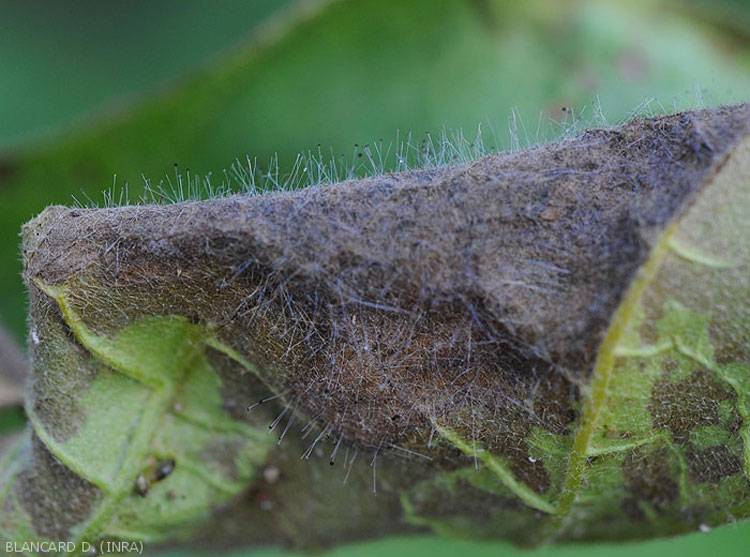Brinjal
Choanephora Fruit Rot

Choanephora cucurbitarum
Fungal Disease

Choanephora cucurbitarum
Fungal Disease

Choanephora cucurbitarum
Fungal Disease
Introduction
Choanephora cucurbitarum, commonly known as Choanephora fruit rot, is a fungal disease primarily affecting cucurbits and other vegetables. This opportunistic fungus thrives in warm and humid conditions, causing significant damage to fruits, flowers, stems, and leaves.
Environmental Conditions
-
Optimal Temperature: 25°C with 100% relative humidity.
-
High Sporulation: At 31°C, large sporangia production is stimulated but conidia formation is reduced.
-
Preferred Conditions: Damaged plant tissues and poorly adapted crops in hot, humid climates.
Appearance
-
Similar to diseases caused by other Mucorales genera such as Mucor and Rhizopus.
-
Host tissues exhibit a hairy appearance due to tall sporangiophores bearing brown sporangiola at their tips.
Geographic Distribution
-
Found in tropical to subtropical zones, including:
-
Asia: China, India, Indonesia, Korea, Pakistan
-
Africa: Benin, Congo, Ghana, Kenya, Nigeria, Egypt
-
Americas: USA, Brazil, Colombia, Peru, Venezuela
-
Oceania: Australia, French Polynesia, New Caledonia
-
Host Range
-
Cucurbits: Watermelon, zucchini, squash, pumpkin, vegetable sponge (Luffa cylindrica)
-
Other Vegetables: Chili, eggplant, radish, cauliflower, beans, peas, spinach, potatoes
-
Other Plants: Yam, sweet potato, okra, amaranth, cowpea, hibiscus, fig, cotton, papaya, sorghum
Symptoms
-
Flowers:
-
Colonization of senescent petals, causing rot and darkening.
-
Abortion of young fruits.
-
-
Fruits:
-
Wet, soft lesions starting from senescent floral parts or wounds.
-
Rapid progression to soft rot with a translucent dark appearance.
-
Complete liquefaction within days.
-
-
Stems:
-
Moist, dark green to brown lesions, especially in the cortex.
-
Wilting and drying out of leaves.
-
-
Leaves:
-
Moist alterations evolving into rot.
-
-
Young Shoots:
-
Rot and destruction.
-
Sporulation and Dissemination
-
Thrives on rotten fruit with heavy sporulation.
-
Spores are dispersed by wind, rain, sprinkler irrigation, and soil splash.
-
Insects may act as vectors.
Notable Cases
-
Hokkaido, Japan:
-
Causes flower stalk rot in sugar beet.
-
Dark brown, soft-rotted lesions on flower stalks.
-
Comparisons
-
Similar to Botrytis cinerea in tropical regions.
-
Often confused with Rhizopus stolonifer, which causes similar fruit rot symptoms.
Conclusion
Choanephora cucurbitarum is a widespread, polyphagous opportunistic fungus causing considerable damage under favorable humid conditions. Proper identification and management are crucial to preventing significant crop losses in tropical and subtropical regions.
Source: PlantVillage,CABI




